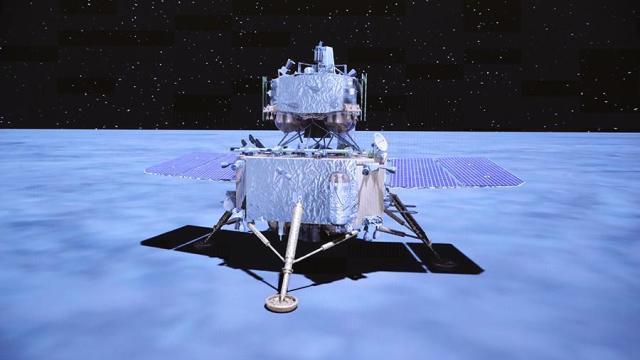Chang 'eite samples were delivered to Earth by the Chang 'e-5 mission
TASS, February 6. Chinese planetary scientists have discovered that samples of the new lunar mineral Chang'eite, delivered to Earth by the Chang 'e-5 mission, were formed in the Aristarchus crater as a result of a fairly large asteroid falling on the Moon. This was reported by the press service of the American Institute of Physics with reference to an article in the scientific journal Matter and Radiation at Extremes.
"The Chang'e-5 mission delivered to Earth the first samples of lunar rocks since the Soviet Luna-24, among which there are fragments of the previously unknown mineral Chang 'eite, as well as bizarre combinations of several silicon minerals. The analysis conducted by scientists shows that the likely source of both Chang 'eite and these silicon minerals is the Aristarchus crater," the report says.
This is the conclusion reached by a group of Chinese planetary scientists led by a professor at the Geochemical Institute of the Chinese Academy of Sciences in Guiyang (China) Du Wei studied the structure and physical properties of Chang 'eite samples, as well as other fragments of lunar rocks brought to Earth. They contain two silicon minerals, stishovite and seifertite, similar in composition to ordinary quartz, but different in structure from it.
As scientists explain, the proximity of these minerals, as well as the presence of Chang'e, indicates that the collected "Chang 'e-5" lunar matter originated at very high temperatures and pressures, which in the past were considered impossible. Chinese scientists have found out that similar conditions could occur on the Moon when a fairly large asteroid falls.
"The analysis showed that the samples of these minerals were formed at a pressure of 11-40 gigapascals, which arose during a collision with a length of 0.1-1 second. These data and calculations of the shock wave show that the crystals originated in a crater whose diameter is about three tens of kilometers. There are four similar recesses in the vicinity of the Chang'e-5 landing point," the report says.
Subsequent analysis of the age and properties of these craters showed that the most likely source of all these minerals is the Aristarchus crater, which presumably appeared on the surface of the Moon relatively recently, no more than a billion years ago. The subsequent study of this shape of the lunar relief will help to understand how and when these unusual minerals arose, the planetary scientists summed up.
In November 2020, the Changzheng-5 launch vehicle was launched from the Wenchang Cosmodrome on Hainan Island. She sent the Chang'e-5 spacecraft to the Moon, which returned to Earth about 23 days after launch, collecting about 2 kg of lunar rock for study by Chinese specialists both for scientific purposes and for a project to prepare for the construction of a research base.
The study of samples of lunar rocks delivered to Earth showed that they contain particles of a previously unknown mineral formed at high temperatures and pressures. This lunar mineral, presumably formed as a result of an asteroid collision with the surface of the Moon, was named "chang 'eite" in honor of the Chinese goddess of the Moon and the lunar mission of the same name. As a result, China became the third country after the USSR and the USA to discover a new lunar mineral.

